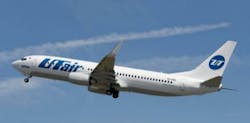Shipboard high-energy laser weapon takes out small target vessel during Navy tests off California coast
U.S. military officials are looking to weapons-grade solid-state lasers to provide shipboard defense against threats such as cruise missiles, manned and unmanned aircraft, and swarming attack boats; defense against rockets, artillery, and mortars; and precision aircraft strike.
During testing, experts integrated the Maritime Laser Demonstrator with a ship radar and navigation system. The JHPSSEL program has sought to build and demonstrate a 100-kilowatt military-grade solid-state laser weapon Money for JHPSSEL comes from the U.S. Army Space and Missile Defense Command in Huntsville, Ala; Office of the Secretary of Defense-Joint Technology Office in Albuquerque, N.M.; Air Force Research Laboratory at Kirtland Air Force Base, N.M.; and the Office of Naval Research.
Northrop Grumman was one of two teams selected in 2005 for the third phase of the JHPSSL program. The other team was Textron Systems in Wilmington, Mass.
In phase three of the JHPSSEL program, Northrop Grumman laser experts first demonstrated a solid-state laser able to achieve power stronger than 100 kilowatts in early 2009. JHPSSEL is sponsored by the High Energy Laser Joint Technology Office of the U.S. Department of Defense.
Northrop Grumman’s JHPSSEL approach uses amplifier chains built with several high-gain power modules. Company experts used two chains to demonstrate a 27-kilowatt laser during the second phase of the program, and combined eight chains to scale the laser's power up to 100 kilowatts.
Solid-state lasers use layers of crystalline or glass materials doped with ions, which use flashlamps or diodes to excite the ions sufficiently to emit laser energy.
For more information contact Northrop Grumman Space Systems online at www.as.northropgrumman.com, or the Office of Naval Research at www.onr.navy.mil.
